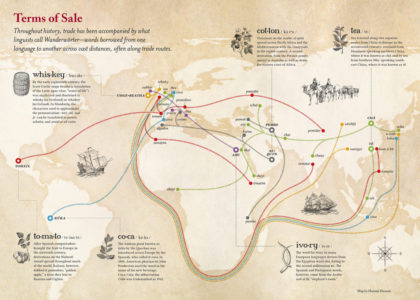Evolution of Different Names for “Tea”
Chinese had been known great benefits of tea for more than 5000 years. By the time when Chinese emperor Shen Nong discovered tea, his good self would have never thought that this wonderful beverage would become the most consumed beverage in the world after water. But according to history, international trading of tea was initiated just few centuries ago. With the spread of this healthy and functional beverage, different nations started to call Tea in various names.

As Nick Routley had published in Visual Capitalists (https://www.visualcapitalist.com/), China’s export dominance over tea influenced how people around the world refer to their steeped beverages.
If you focus on the green line of above map, the spread of tea along the Silk Route from Mandarin-speaking Northern China resulted in much of Asia (India, Iran, Turkey etc), Russia and Africa (Northern & West Africa) having similar sounding names for tea. Chá evolved into the chai widely consumed in India and surrounding areas today. Even though Assam area in India has been recognized as one of the tea origins, tea became more popular during the British rule in this subcontinent.
Other major tea trade route, through Min-speaking Southern China, spread the pronunciation that became the standard around Europe. This is why we see such striking similarities between thé (French), thee (Dutch), tee (German), té (Spanish), and tè (Italian). Tea was first shipped to Europe from Xiamen port, Fujian province, China. Even in Sri Lanka where finest quality Ceylon Teas are grown, Tea is called “thé ” in local language.
View More Tea Articles + Latest Tea News: http://www.teawithnipun.com/
References
1. Infographic: https://www.visualcapitalist.com/mapping-words-along-trade-routes/



